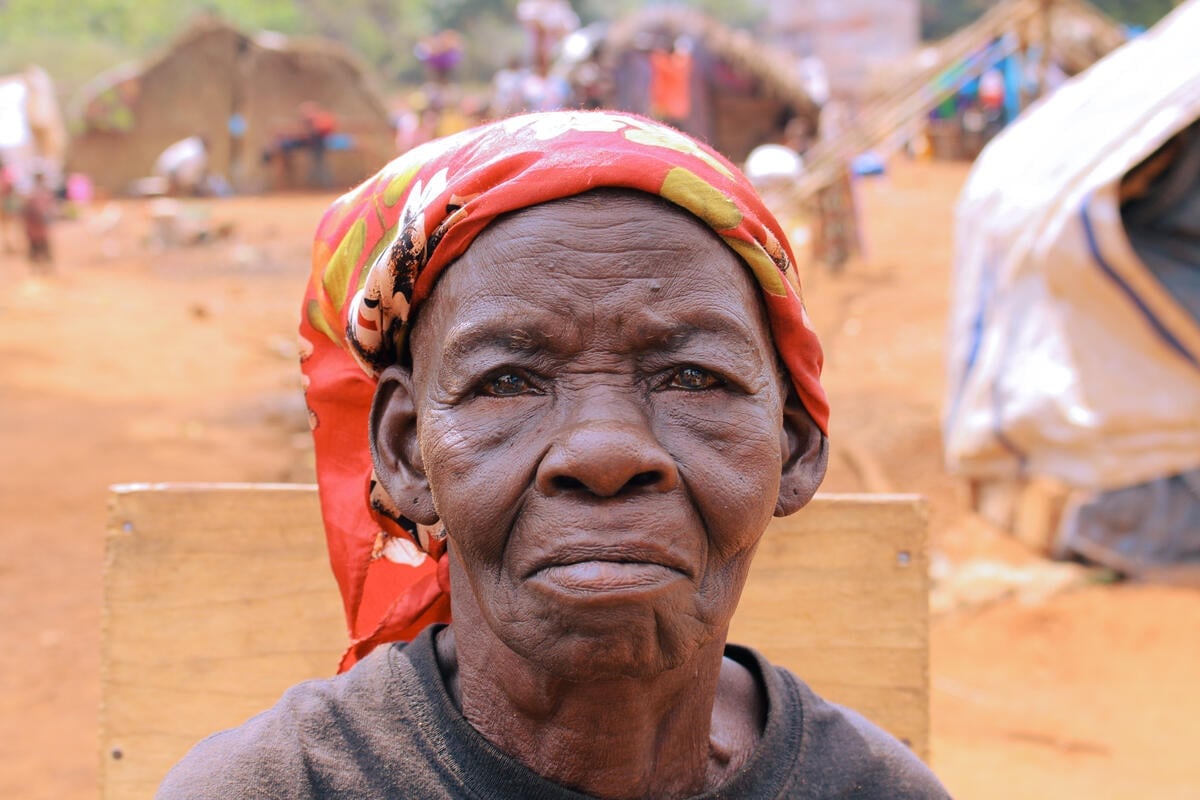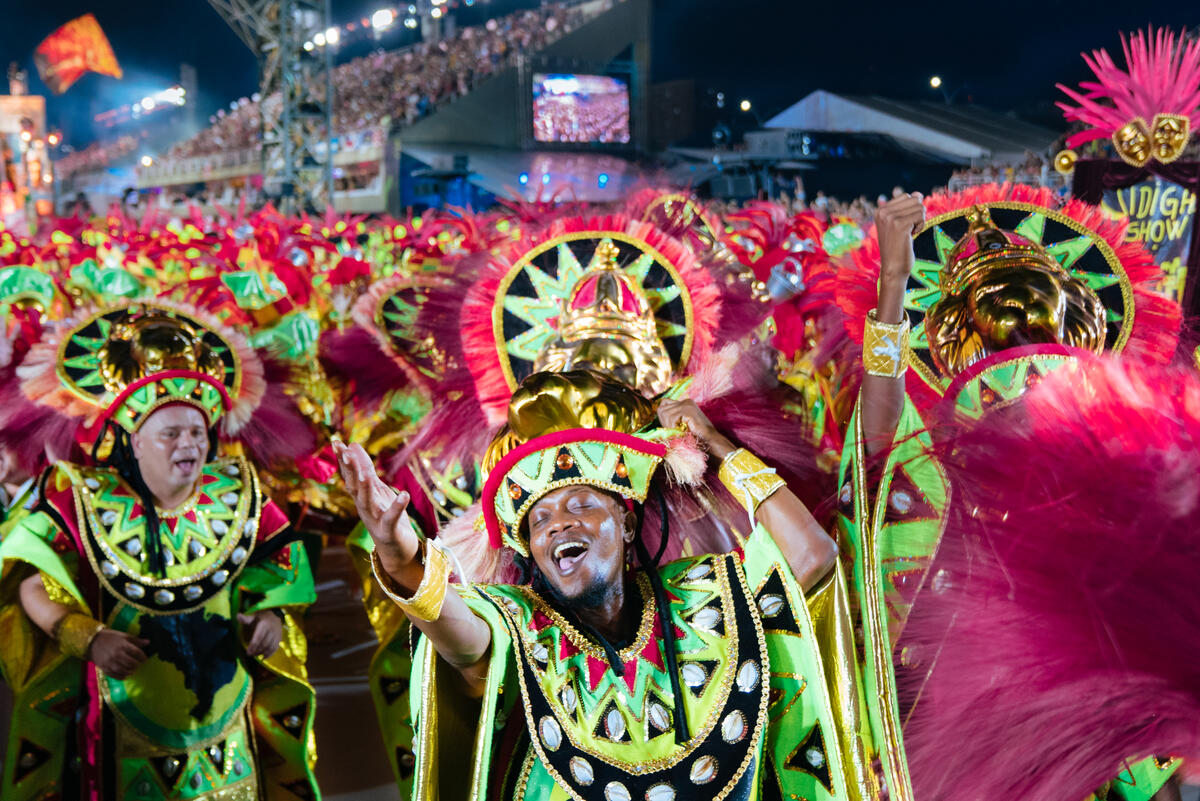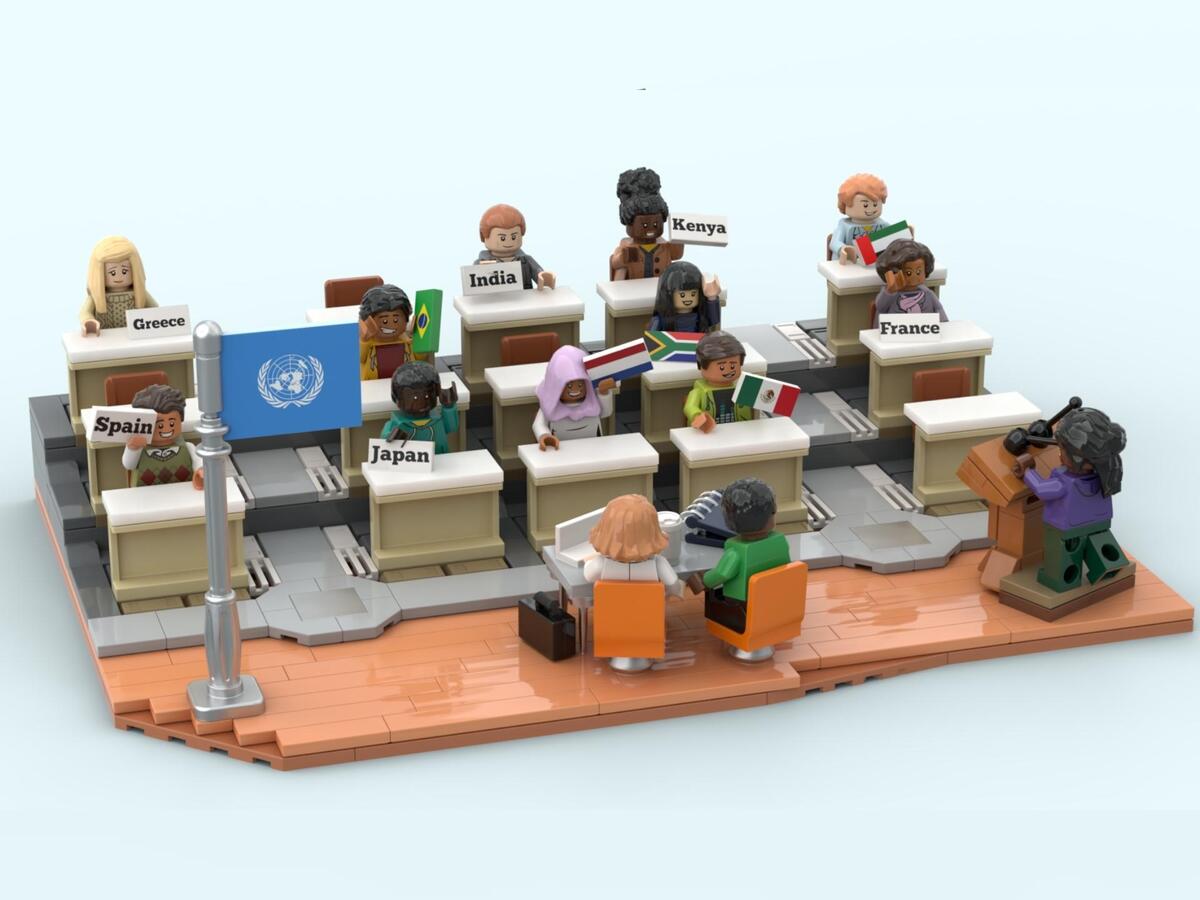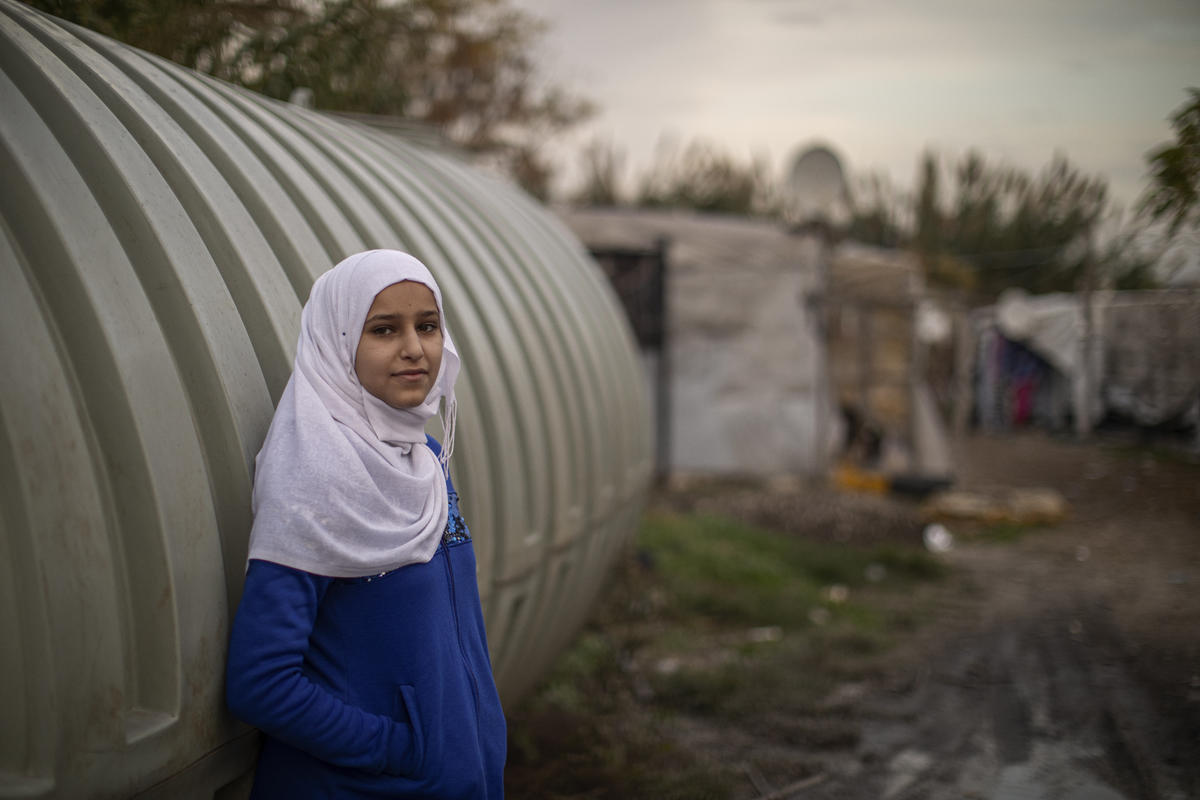Refugees
Refugees
At UNHCR, we have been assisting refugees for over 70 years.
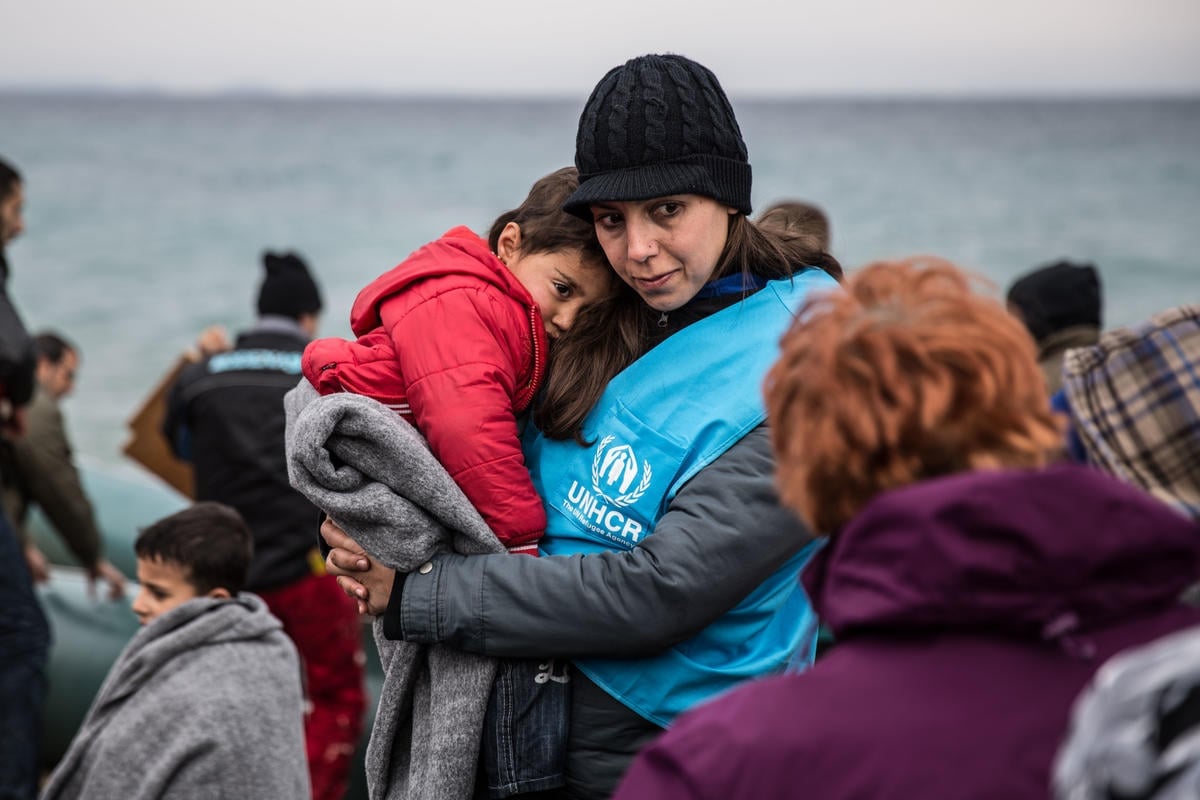
A UNHCR staff member holds a young refugee child in a blanket after their boat landed on the Greek island of Lesvos.
Who is a 'refugee'?
Refugees are people forced to flee their own country and seek safety in another country. They are unable to return to their own country because of feared persecution as a result of who they are, what they believe in or say, or because of armed conflict, violence or serious public disorder.
Many have been forced to flee with little more than the clothes on their back, leaving behind their homes, possessions, jobs and loved ones. They may have suffered human rights violations, been injured in their flight, or seen family members or friends killed or attacked.
Today, there are 43.7 million refugees globally. UNHCR, the UN Refugee Agency, is mandated to protect 32 million refugees and 5.8 million other people in need of international protection. A further 6 million Palestine refugees are supported by the United Nations Relief and Works Agency for Palestine Refugees in the Near EastLink is external (UNRWA), which was set up in 1949 to care for displaced Palestinians.
Refugee definitions and meaning
Who is a refugee is defined in international law. The 1951 Refugee Convention defines a refugee as a person who "owing to well-founded fear of being persecuted for reasons of race, religion, nationality, membership of a particular social group or political opinion, is outside the country of [their] nationality and is unable or, owing to such fear, is unwilling to avail [themself] of the protection of that country."
Regional legal instruments in Africa and the Americas have broadened this definition by including people who are compelled to leave their country because of “external aggression, occupation, foreign domination, internal conflicts, massive violation of human rights or events seriously disturbing public order”.
- 1951 Refugee Convention
- 1969 OAU Convention governing the specific aspects of refugee problems in Africa
- 1984 Cartagena Declaration on Refugees
How does UNHCR help refugees?
UNHCR protects refugees, advocates for their rights and works with governments and partners to find long-term solutions so they can find a safe place to call home.
- Respond in emergencies: In an emergency, we ensure refugees can reach safety and are not pushed back across a border into danger. Together with partners, we help provide the basics for survival, including shelter, water and medical care, and advocate for their protection and right to seek safety.
- Safeguard their rights while displaced: While most people who become refugees want to return home, it is often unsafe to do so for years if not decades. We help host countries ensure refugees can access their rights to education and health care. We also help them access livelihoods so they can live with greater independence and contribute to their communities, which is what they want.
- Find long-term solutions: At the same time, we convene and work with the international community to find long-term solutions. This can include support to voluntarily return to their home country once safe to do so, integration into the host community, or resettlement and integration in a third country.
Refugees as partners
Refugees have made extraordinary efforts to survive, and they bring with them skills, knowledge and insights. At UNHCR, we aim to work with them as partners, not people for whom we make decisions. We place their needs at the heart of every action and work to ensure they hold a meaningful role in decision-making processes.
Text and media 15
“It is the second time I am fleeing my country. I was not able to bring clothes with me. I was afraid of the gunshots and could not bear to stay.”
Valentine, 92, sits outside her makeshift shelter in the Democratic Republic of Congo. She and her family fled their home in the Central African Republic to escape the violence that broke out after elections in the country.
UNHCR distributed emergency supplies, including blankets, sleeping mats, tarpaulins and mosquito nets.
Refugees and international law
The 1951 Refugee Convention and its 1967 Protocol are the key legal documents that protect refugees. They provide the universal definition of who is a refugee and outline the minimum standards for their treatment. The cornerstone is the principle of non-refoulment (Article 33) which states that refugees have a right not to be sent back to their country of origin if their life or freedom would be at risk.
Countries that have signed the Convention are obliged to treat refugees according to the standards outlined. UNHCR promotes States’ accession to the Convention and helps governments translate it into national laws.
Who decides who is a refugee?
People will usually go through a process known as refugee status determination to establish whether their circumstances make them a refugee. This is usually done by host countries, or by UNHCR when support is needed. When vast numbers of people are forced to flee at once, everyone fleeing that country may be granted refugee status on a ‘prima facie’ basis so that cases do not need to be examined individually.
What is the difference between a refugee and a migrant?
A refugee is someone who has been forced to flee conflict or persecution and has crossed an international border to seek safety. They cannot return to their country without risking their life or freedoms. It is a legal term that carries with it certain protections that refugees are entitled to.
The term ‘migrant’ does not have an international legal definition. However, it is commonly understood to refer to someone who has chosen to leave their home to start a new life in another country. A migrant can return home without risking their life or freedom. The movement is understood to be voluntary.
People who are likely to be asylum-seekers or refugees should not be referred to as migrants. To do so can undermine the legal protections afforded to refugees under international law.
Please consider donating today
Your gift can help protect someone forced to flee their home due to conflict or persecution.


